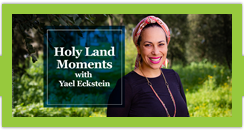Daily Devotional
Sharing Our Daily Bread
May 1, 2014 - 5:00 amThis Devotional's Hebrew Word
“Take the finest flour and bake twelve loaves of bread, using two-tenths of an ephah for each loaf. Arrange them in two stacks, six in each stack, on the table of pure gold before the LORD.” — Leviticus 24:5–6
The Torah portion for this week is Emor, which means “speak,” from Leviticus 21:1–24:23, and the Haftorah is from Ezekiel 44:15–31.
Toward the end of this week’s Torah portion, we read about the ritual table that was in the Tabernacle. At all times, this table held twelve loaves of bread, placed in two columns that were each six loaves high. Miraculously, the bread remained fresh all week long and was consumed by the priests at the week’s end.
While we no longer have the Tabernacle or its ritual table, there are valuable lessons we can learn from this holy vessel that are relevant for our lives today. The Sages teach that the table represents a person’s sustenance. The special showbread, as it was called, contains lessons for what we should do relate with our own “daily bread” and teaches us the best way to make use of what we have been given.
There are three main lessons we can learn from the showbread, all of which have a common theme. The first lesson comes from the shape of the bread. According to the Talmud, each loaf of bread had a flat base and then turned upward at the end. It looked as though two walls stood at either end of the base of the bread. When the bread was placed on the table in two columns, each loaf of bread would hold up the one above it. One loaf of bread supported another. So, too, teach the Sages, do we have to support one another. If God has blessed us with abundance, it is so that we can help those who are lacking.
The second idea takes into consideration the size of the bread. The Sages did some calculations and determined that one loaf of bread contained exactly double the amount that a person actually needed. This teaches us that God wants to give us more than we need, not so that we can waste what He gives us, but so we can share what we have. If we have no interest in giving to the needy, then why would God give us any more than we need? However, the more we give, the more God will give us to share. As it says in Proverbs 22:9: “The generous will themselves be blessed, for they share their food with the poor.”
The final idea suggests that the placement of the bread on the table teaches us about the brotherly bonds that can be formed through sharing what we have. The bread was placed in columns side by side, creating six pairs of bread. Again, the idea is that our sustenance is connected to another person. When we pair up with the needy and share what we have, we all benefit. As we bless others, we draw blessings toward ourselves.
As we go through our day, think about all that God has given to us this day and how we can share “our daily bread” with others.

